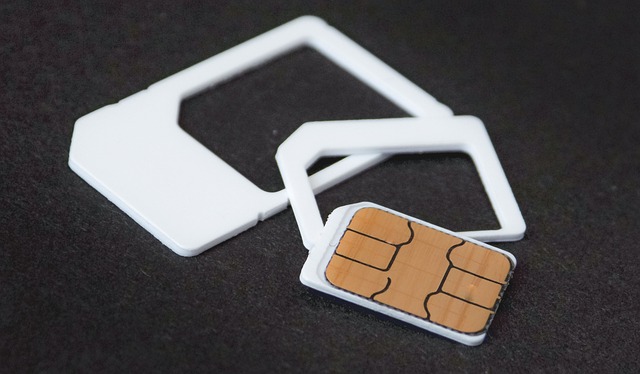Portable 5kW Solar Generator Pricing In 2025: What To Expect
As renewable energy solutions continue to evolve, portable solar generators have become increasingly popular for both emergency backup power and off-grid applications. The 5kW portable solar generator category represents a sweet spot for many users, offering substantial power capacity while remaining transportable. Looking ahead to 2025, several factors will influence the pricing landscape for these versatile power stations, including technological advancements, manufacturing scale, and global economic conditions.
What Factors Will Influence Portable 5kW Solar Generator Prices in 2025?
The projected pricing for portable 5kW solar generators in 2025 will be shaped by several key market forces. Battery technology continues to advance rapidly, with lithium-ion variants becoming more efficient and cost-effective through economies of scale. The global semiconductor market, which impacts the electronic components critical to these generators, is expected to stabilize after recent supply chain disruptions. Additionally, increased competition among manufacturers is likely to create downward pressure on prices, benefiting consumers seeking high-capacity portable power solutions.
Environmental policies and renewable energy incentives will also play a significant role in determining net costs to consumers. Many regions are expanding tax credits, rebates, and other financial incentives for renewable energy investments, which could effectively reduce the purchase price of portable solar generators in the coming years. Raw material availability, particularly for battery components like lithium, cobalt, and nickel, will remain a critical factor in manufacturing costs.
Essential Portable 5kW Solar Generator Features to Expect in 2025
By 2025, portable 5kW solar generators will likely incorporate several advanced features as standard offerings. Battery chemistry improvements will lead to higher energy density, meaning more power capacity in similar or smaller form factors. Most models will likely feature lithium iron phosphate (LiFePO₄) batteries, which offer superior cycle life and safety compared to older technologies. Charging capabilities will expand to include faster solar inputs, with many units able to reach full charge in 4-6 hours under optimal conditions, compared to 8-10 hours for current models.
Smart connectivity features will become ubiquitous, with comprehensive mobile apps providing detailed power monitoring, usage statistics, and predictive maintenance alerts. Power output options will expand beyond standard AC outlets to include more USB-C ports with Power Delivery support for modern devices, wireless charging pads, and specialized outputs for high-demand tools or appliances. Weather resistance will improve, with many units achieving higher IP ratings to withstand diverse outdoor conditions without sacrificing performance.
Benefits of Portable 5kW Solar Generator Investment in 2025
Investing in a portable 5kW solar generator in 2025 will offer several compelling advantages. Energy independence remains a primary benefit, allowing users to generate and store power regardless of grid conditions. This capability becomes increasingly valuable as weather events cause more frequent power outages in many regions. The environmental impact is significant as well, with solar generators producing zero emissions during operation, unlike traditional gas generators that contribute to air and noise pollution.
Financial savings may be substantial over the generator’s lifetime. While the initial investment remains higher than fossil fuel alternatives, operational costs are minimal with free solar energy and fewer maintenance requirements. Most 2025 models will feature modular design approaches, allowing users to expand capacity over time rather than replacing the entire unit. This scalability provides long-term value as power needs evolve. Additionally, these systems will offer multi-purpose utility, serving not just as emergency backup but also powering outdoor activities, mobile workstations, and even supplementing home energy during peak rate periods.
Portable 5kW Solar Generator Price Comparison for 2025
The portable solar generator market continues to evolve with technological advancements affecting pricing across different segments. Based on current industry trajectories and expert projections, here’s what consumers might expect to see in terms of pricing for portable 5kW solar generators in 2025:
| Brand Category | Estimated Price Range (2025) | Notable Features | Battery Technology |
|---|---|---|---|
| Premium Tier | $3,200 - $4,500 | Advanced app integration, 10+ year warranty, expandable capacity up to 15kWh, fastest charging | LiFePO₄ with advanced BMS |
| Mid-Range | $2,400 - $3,100 | 7-9 year warranty, multiple charging options, weather-resistant design | LiFePO₄ standard |
| Value-Oriented | $1,800 - $2,300 | Standard features, basic app functionality, 5-year warranty | Mixed lithium technologies |
| Entry-Level | $1,200 - $1,700 | Essential power outputs, limited expandability, 3-year warranty | Lithium-ion (non-LiFePO₄) |
Prices, rates, or cost estimates mentioned in this article are based on the latest available information but may change over time. Independent research is advised before making financial decisions.
These projected prices represent a notable decrease from current market rates, reflecting anticipated manufacturing efficiencies, increased competition, and technological maturation in the portable solar generator market. Premium models will continue commanding higher prices due to advanced features like artificial intelligence power management, expanded connectivity, and superior materials, while entry-level options will provide basic functionality at more accessible price points.
How to Evaluate Portable 5kW Solar Generator Value Beyond Price
While price is an important consideration when planning for a portable 5kW solar generator purchase in 2025, several other factors should influence your decision-making process. Warranty terms will vary significantly between manufacturers, with premium options offering up to 10 years of coverage compared to just 2-3 years for budget alternatives. Battery cycle life—the number of complete charge-discharge cycles before capacity significantly degrades—will range from 2,000 to over 6,000 cycles depending on the quality and chemistry.
Efficiency ratings will become increasingly standardized, making it easier to compare real-world performance across different models. Look for round-trip efficiency percentages (how much of the energy stored can actually be used) above 85% for optimal value. The expandability of the system should also factor into your evaluation, as some manufacturers will offer compatible battery expansion packs that can effectively double or triple capacity without requiring a completely new system. Finally, consider the customer support infrastructure of the manufacturer, as technical assistance needs may arise over the long lifespan of these significant investments.
As we approach 2025, the portable 5kW solar generator market will continue maturing, offering consumers more options at increasingly competitive price points. By understanding the factors that influence pricing and the features that provide genuine value, buyers can make informed decisions that align with their power needs and budget considerations.





